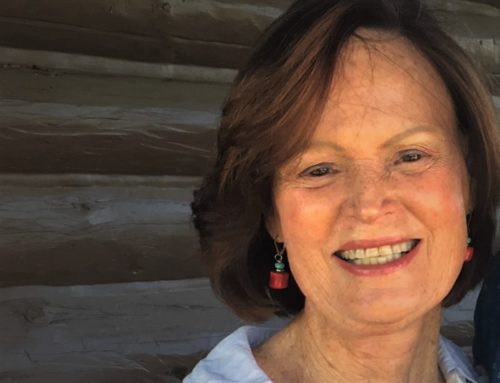(This article originally appeared in the February 2019 edition of LI’s print newsletter, The Arch.)
The Barbara C. and Thomas E. Donnelley II Preservation Fund for Illinois provides monetary assistance to preserve or protect significant structures and sites in Illinois, a grant program that was transferred to Landmarks Illinois in 2013. Barbara “Barbi” Donnelley and her long-time colleague Gerald W. Adelmann, President & CEO of Openlands, head the advisory committee for this endowed fund. Landmarks Illinois recently sat down with Barbi for an interview.
Landmarks Illinois: Landmarks Illinois launched the Barbara C. and Thomas E. Donnelley II Preservation Fund five years ago. What inspired you to fund this grant program and make it available for planning activities?
BARBARA DONNELLEY: I am a former trustee of the National Trust for Historic Preservation, and that is where this fund started. Additionally, Tom and I are grassroots people – Illinois means everything to us, especially Chicago where we have a lot of family history. For example, my great, great grandfather was a member of the congregation at Second Presbyterian Church in Chicago, which was a recent grant recipient. Our purpose with the fund was to be able to preserve the history in our home state and town.
LI: Thanks to your generous support, Landmarks Illinois is able to provide seed funds to people saving places important to them throughout the state. Why is it important to you, personally, to be a part of preserving historic places in Illinois?
BD: In addition to the personal, family connections to places around Chicago, it has been really fun for us to explore and learn about downstate communities. Through the grant program, we are connecting with people from other parts of the state and visiting places where the grant funding has had an impact, like Jacksonville and Princeton. It’s a great way to see the state and the places you have helped.
LI: Is there a specific grant recipient or historic preservation project since the grant program launched in 2013 that you found notable or especially inspiring?
BD: I think it would be the project in Princeton to list the city’s downtown districts on the National Register. I had the chance to visit Princeton after the city received the grant in 2016 and was treated to tours of the town and lunch with the mayor. The city and the residents really made an impression on me! These people truly care about their community, and I think it is so important.
LI: Can you tell us about a historic place in your own community that is important to you and why it is meaningful to you?
BD: Prairie Avenue in Chicago. Back in 1972, I took the docents training course for the Chicago Architecture Foundation (now Chicago Architecture Center) at Glessner House on Prairie Avenue. I did not know at the time, but I would find out that my great grandfather’s former house was right across the street from Glessner House, so that avenue ended up having a big effect on me.
While I was chair of the Mies Van Der Rohe Society at IIT, we played a large part in the restoration of Carr Chapel, a stunning nondenominational building and Mies Van Der Rohe’s only religious structure.
Additionally, we were recently involved in a small way with the restoration of Unity Temple in Oak Park. What is special is being a part of history, seeing it come alive and seeing it become not only structurally sound but relevant today.
Wrightwood 659 is another one right in our neighborhood. Architect Tadao Ando is one of my absolute favorites.
LI: What would you say to encourage others to consider creating historic preservation donor-advised funds?
BD: I think sense of place is so important, and people need to feel engaged. A personal involvement really makes a difference, too, and it doesn’t have to be a family connection. Take the Princeton example – the town went all out to show us how proud they were of their community. That pride in our city is what we need to show more of.

